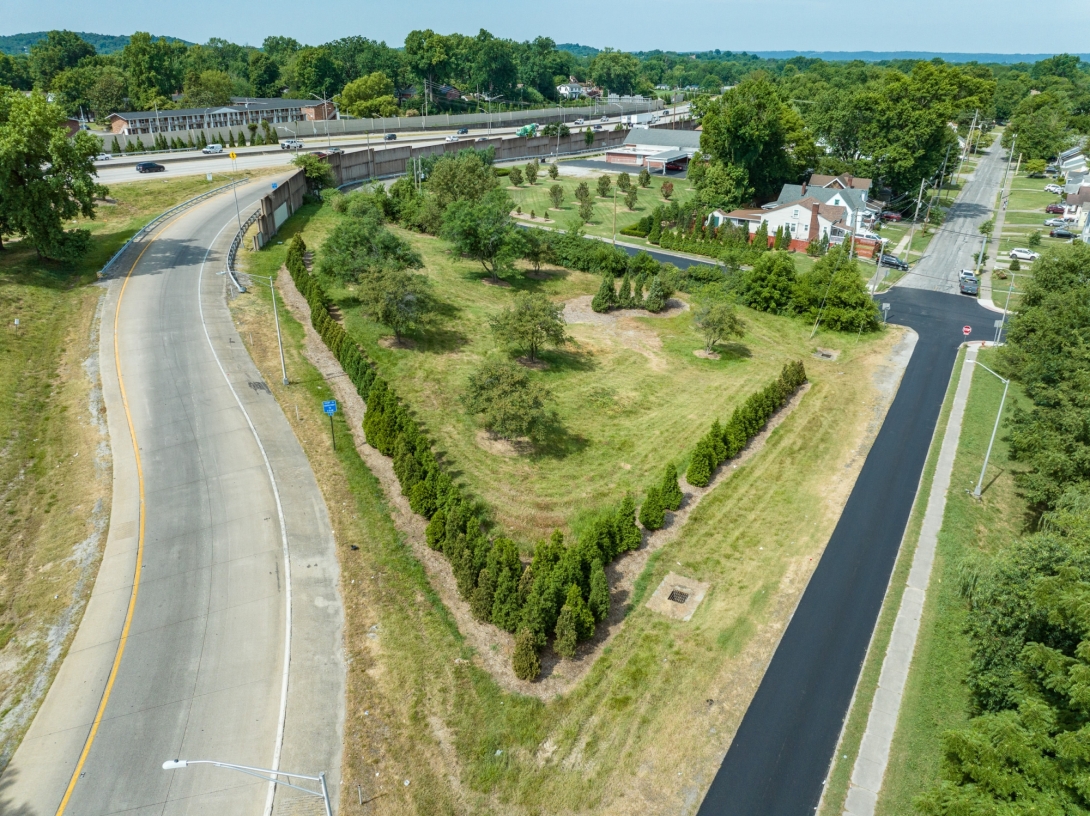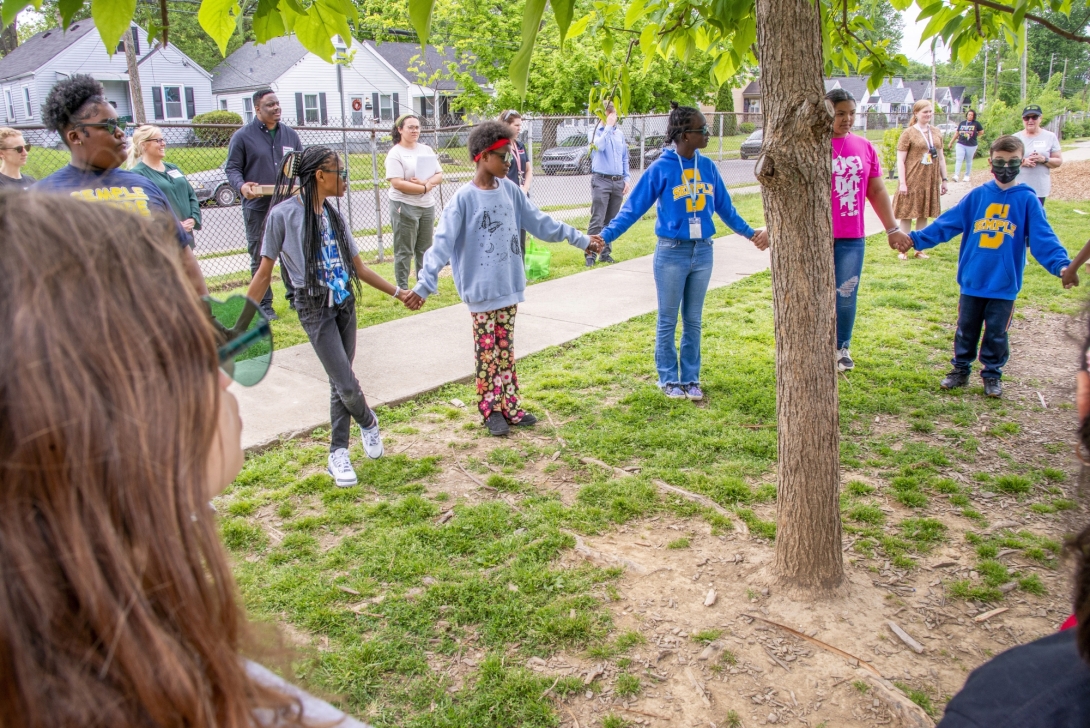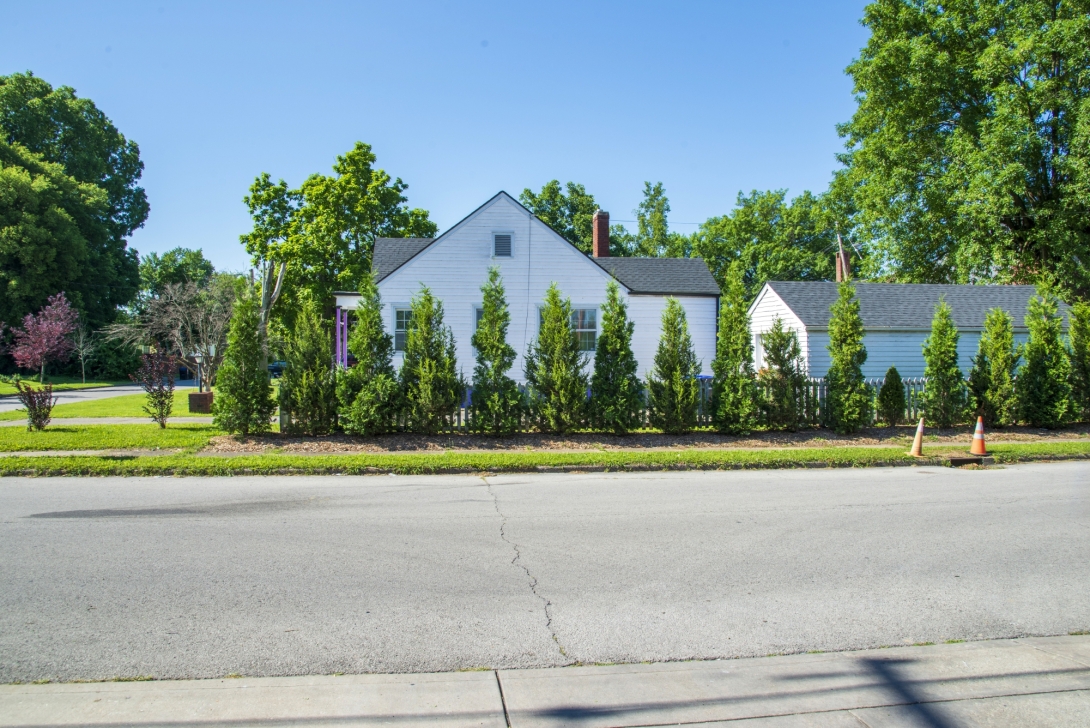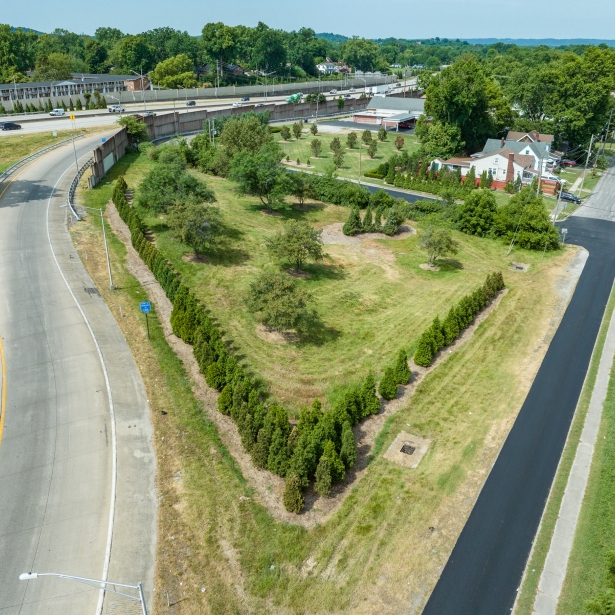Green Heart Louisville Project
The Green Heart Louisville Project is a groundbreaking scientific study that is testing the hypothesis that introducing more green trees and shrubs into a neighborhood can directly lower the risk of cardiovascular disease (CVD), the leading cause of death worldwide.
Launched in 2018, the study investigates whether and how living among more densely greened surroundings contributes to better heart health. The design of the study closely mirrors clinical trials, which test whether medical treatments are eUective. The Green Heart team applied the treatment—the addition of thousands of large trees and shrubs—to the center of a four-square-mile area in south Louisville. Trees and shrubs were not planted in the areas surrounding the central planting area, known as the control area. Researchers then compared the health of residents to determine whether the plantings had any impact on their health.
First Clinical Outcomes
In August of 2024, the Green Heart Louisville team announced the first clinical outcomes from the study. Initial findings indicate that people living in neighborhoods where the number of trees and shrubs was more than doubled showed lower levels of a blood marker of inflammation than those living in the control area. General inflammation is an important risk indicator for heart disease and other chronic diseases.
Those living in the greened area had 13-20% lower levels of a biomarker of general inflammation, a measure called high-sensitivity C-reactive protein (hsCRP), compared to those living in the areas that did not receive any new trees or shrubs. Higher levels of hsCRP are strongly associated with a risk of cardiovascular disease and are an even stronger indicator of heart attack than cholesterol levels. Higher CRP levels also indicate a higher risk of diabetes and certain cancers. A reduction of hsCRP by this percentage corresponds to nearly 10-15% reduction in the risk of heart attacks, cancer, or dying from any disease.
Global Impact
The Green Heart Project’s work to establish a scientific link between nature—specifically urban greenery—and human health is already influencing projects worldwide. The first clinical outcomes announcement garnered widespread national media attention, including a segment on the “TODAY Show”. Many research papers, posters and talks on the project have been delivered to both scientists and laypeople since the project’s inception with additional research and outreach to come in the years ahead.
-
 Trees planted along Watterson Expressway/Interstate 264 in Louisville, KY for the Green Heart Louisville Project. Credit: Mike Wilkinson for The Nature Conservancy.
Trees planted along Watterson Expressway/Interstate 264 in Louisville, KY for the Green Heart Louisville Project. Credit: Mike Wilkinson for The Nature Conservancy. -
 Trees planted along Watterson Expressway/Interstate 264 in Louisville, KY for the Green Heart Louisville Project. Credit: Mike Wilkinson for The Nature Conservancy.
Trees planted along Watterson Expressway/Interstate 264 in Louisville, KY for the Green Heart Louisville Project. Credit: Mike Wilkinson for The Nature Conservancy. -
 Aruni Bhatnagar, director of the University of Louisville Christina Lee Brown Envirome Institute, standing amid some of the 8,000 trees and shrubs planted for the project. Credit: Mike Wilkinson for The Nature Conservancy.
Aruni Bhatnagar, director of the University of Louisville Christina Lee Brown Envirome Institute, standing amid some of the 8,000 trees and shrubs planted for the project. Credit: Mike Wilkinson for The Nature Conservancy. -
 July 2025 Ice Cream Social for the Green Heart Louisville Project community. Credit: University of Louisville.
July 2025 Ice Cream Social for the Green Heart Louisville Project community. Credit: University of Louisville. -
 July 2025 Ice Cream Social for the Green Heart Louisville Project community. Credit: University of Louisville.
July 2025 Ice Cream Social for the Green Heart Louisville Project community. Credit: University of Louisville. -
 In spring 2024, the Green Heart Louisville Project celebrated the 5th birthday of the first Green Heart tree, which was planted at Semple Elementary School. The catalpa tree was recognized for its resilience by student ambassadors at Semple and named “Unique.” Semple students celebrated the tree’s birthday with an outdoor ceremony circling the tree. Credit: University of Louisville
In spring 2024, the Green Heart Louisville Project celebrated the 5th birthday of the first Green Heart tree, which was planted at Semple Elementary School. The catalpa tree was recognized for its resilience by student ambassadors at Semple and named “Unique.” Semple students celebrated the tree’s birthday with an outdoor ceremony circling the tree. Credit: University of Louisville -
 The Green Heart Louisville Project's HEAL study investigates how neighborhood air pollution and greenness impact heart health of the people in these communities. Summer 2023 HEAL study visits pictured. Credit: University of Louisville.
The Green Heart Louisville Project's HEAL study investigates how neighborhood air pollution and greenness impact heart health of the people in these communities. Summer 2023 HEAL study visits pictured. Credit: University of Louisville. -
 The Green Heart Louisville Project's HEAL study investigates how neighborhood air pollution and greenness impact heart health of the people in these communities. Summer 2023 HEAL study visits pictured. Credit: University of Louisville.
The Green Heart Louisville Project's HEAL study investigates how neighborhood air pollution and greenness impact heart health of the people in these communities. Summer 2023 HEAL study visits pictured. Credit: University of Louisville. -
 Residential planting as part of the Green Heart Louisville Project. Credit: University of Louisville.
Residential planting as part of the Green Heart Louisville Project. Credit: University of Louisville. -
 Before and after image of area where trees were planted along Watterson Expressway/Interstate 264 in Louisville, KY for the Green Heart Louisville Project. Credit: Mike Wilkinson for The Nature Conservancy.
Before and after image of area where trees were planted along Watterson Expressway/Interstate 264 in Louisville, KY for the Green Heart Louisville Project. Credit: Mike Wilkinson for The Nature Conservancy. -
 Before and after image of area where trees were planted along Watterson Expressway/Interstate 264 in Louisville, KY for the Green Heart Louisville Project. Credit: Mike Wilkinson for The Nature Conservancy.
Before and after image of area where trees were planted along Watterson Expressway/Interstate 264 in Louisville, KY for the Green Heart Louisville Project. Credit: Mike Wilkinson for The Nature Conservancy. -
 Before and after image of area where trees were planted along Watterson Expressway/Interstate 264 in Louisville, KY for the Green Heart Louisville Project. Credit: Mike Wilkinson for The Nature Conservancy.
Before and after image of area where trees were planted along Watterson Expressway/Interstate 264 in Louisville, KY for the Green Heart Louisville Project. Credit: Mike Wilkinson for The Nature Conservancy.


